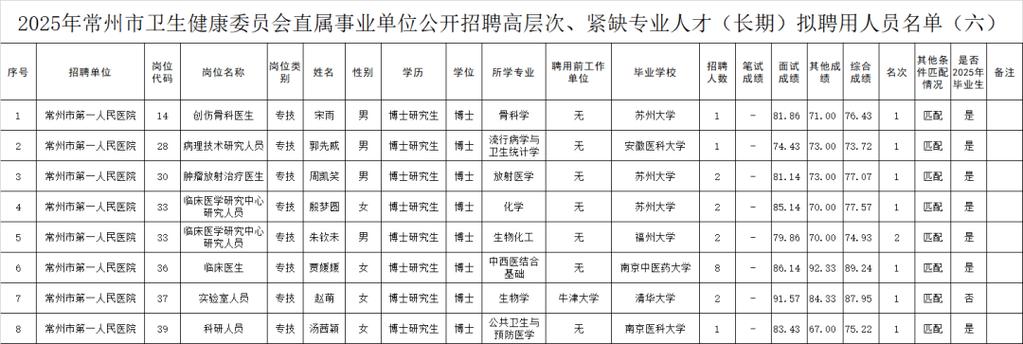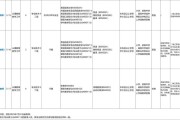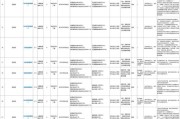根据《广州市白云区2025年上半年赴长沙公开招聘中小学事业编制教师公告》,经笔试、面试、体检、考察等环节,现对广州市白云区2025年上半年赴长沙公开招...
2025-08-13 63 第二批招聘 2021年第二批 教师编制第一批第二批
2025广东广州市增城区卫生健康局下属事业单位招聘拟聘用人员公示(第三批)已发布,今日招聘医疗卫生人才网收集整理全国医疗卫生招聘录用名单及笔试/面试成绩公示。更多医疗卫生招聘名单公示信息,可点击广东医疗卫生招聘名单公示栏目。

根据《2025年广州市增城区卫生健康局下属事业单位公开招聘工作人员公告》规定和要求,经网络报名、笔试、资格复审、面试、体检、考察等程序,现将2025年广州市增城区卫生健康局下属事业单位公开招聘工作人员拟聘用人员名单(第三批)予以公示,公示时间为7个工作日,从2025年8月4日起至2025年8月12日止。
公示期间,如对拟聘用人员有异议,请在上班时间(工作日9:00-12:00,14:00-18:00)用实名通过电话或信函方式,向广州市增城区卫生健康局人事科反映(地址:广州市增城区荔城街富力路6号四楼人事科,联系电话:020-32855106)。
点击查看>>>
2025年广州市增城区卫生健康局下属事业单位公开招聘工作人员拟聘用人员名单(第三批)
广州市增城区卫生健康局
2025年8月4日
原标题:2025年广州市增城区卫生健康局下属事业单位公开招聘工作人员拟聘用人员公示(第三批)
标签: 第三批招聘计划 今年什么时候招第三批 第二批招聘
相关文章

根据《广州市白云区2025年上半年赴长沙公开招聘中小学事业编制教师公告》,经笔试、面试、体检、考察等环节,现对广州市白云区2025年上半年赴长沙公开招...
2025-08-13 63 第二批招聘 2021年第二批 教师编制第一批第二批

根据《广州市白云区2025年上半年赴长沙公开招聘中小学事业编制教师公告》,经笔试、面试、体检、考察等环节,现对广州市白云区2025年上半年赴长沙公开招...
2025-08-08 72 第三批招聘计划 第三批事业单位招聘岗位 教师招聘第三批
发表评论